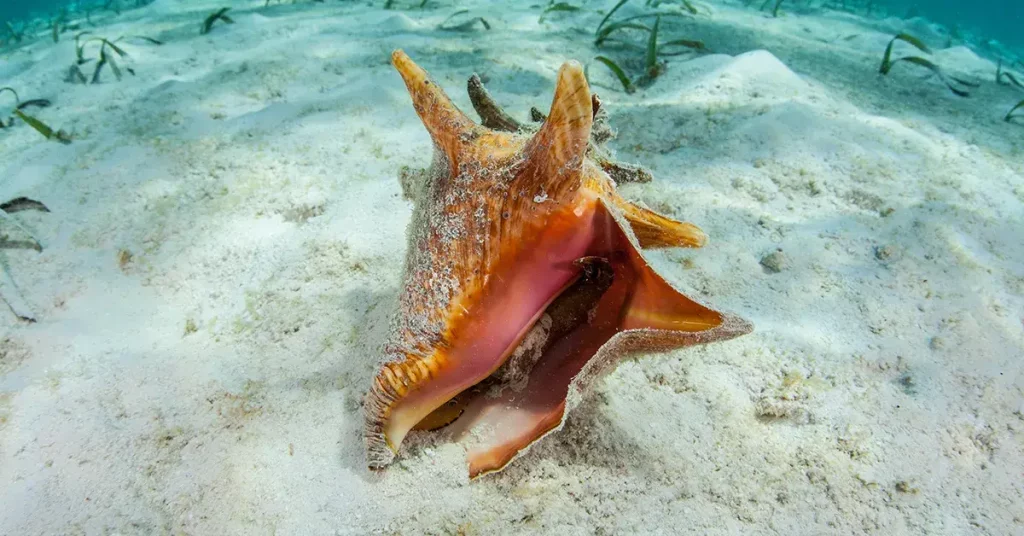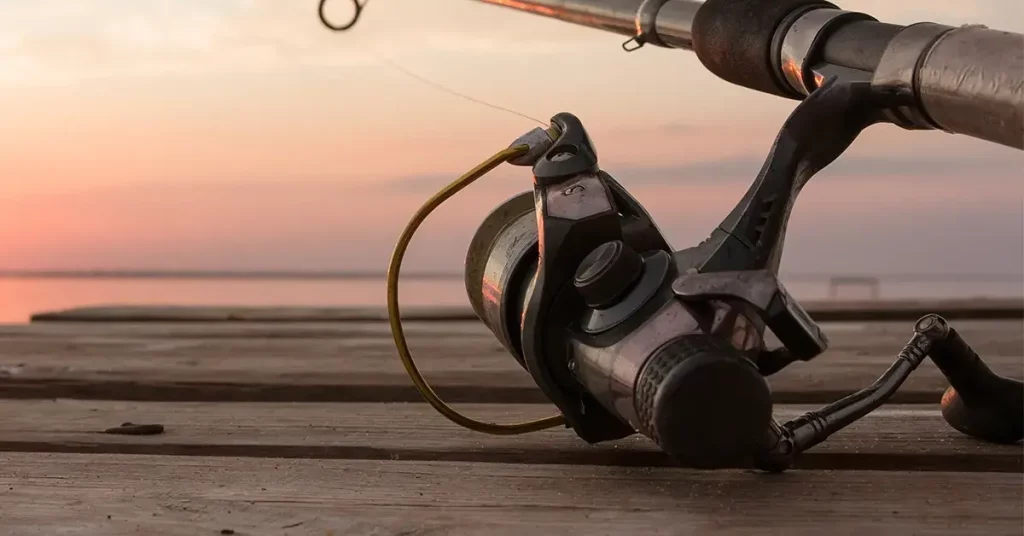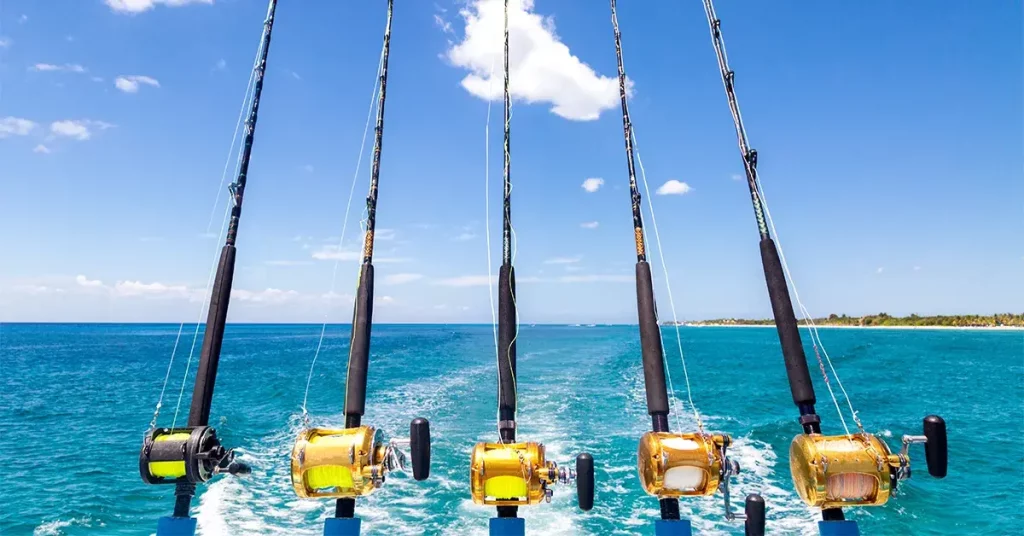Conch are a delicacy all throughout the Caribbean – and for good reason. They’re common in warm shallow waters in Florida, the Bahamas, and with conch fritters and salad found on many local menus, they’ve become a permanent fixture in Caribbean cuisine.
While many people are familiar with their iconic pink shells often sold as souvenirs, less know about their fascinating anatomy and impressive variety of sub-species.
Let’s take a look at this charming sea snail in more detail, so next time you’re chowing down on some conch fritters – you’ll be able to impress your friends with your remarkable conch knowledge!
Description
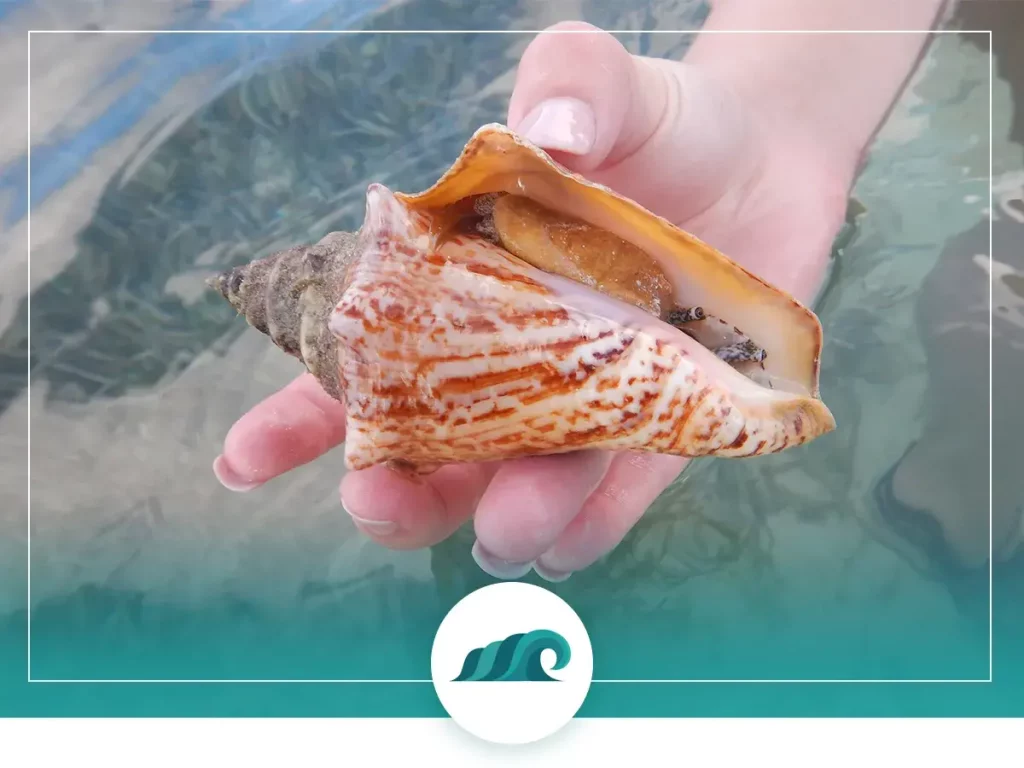
Conch are mollusks – actually giant marine snails – with medium to large sized shells used as protection and defense against predators. Queen conch shells typically range from 6 to 12 inches long, with some rare ones being significantly longer.
While they might not look very mobile, they have a long foot that allows them to hop or leap along the bottom. They’re also surprising good climbers, and can crawl all over reefs and other structure. They’re certainly not quick – which makes them susceptible to divers, as well as other predators like sharks, octopus, crabs, sea turtles, and rays.
In addition to a foot, conch also have a long tube-shaped mouth with a tongue for scraping algae off of sea grass. They also have two eyes at the end of long stalks – which they can actually regenerate if their lost or damaged.
They generate their tough calcium carbonate shells from calcium salts in the seawater and they continue to grow as they mature. The shells become thicker as they mature – and are often used to make jewelry, tools, musical instruments, or even as a cement hardener.
Varieties

While many people think of conch as being a single species, there are actually over 60 different species referred to as ‘conchs’. Many species have brightly colored shells and similar appearance to ‘true conchs’. True conchs are in the Strombidae family, with the Queen conch (Aliger gigas) being the most widely known member.
Other species commonly referred to as conch are the horse conch, melon conch, and crown conch.
Behavior
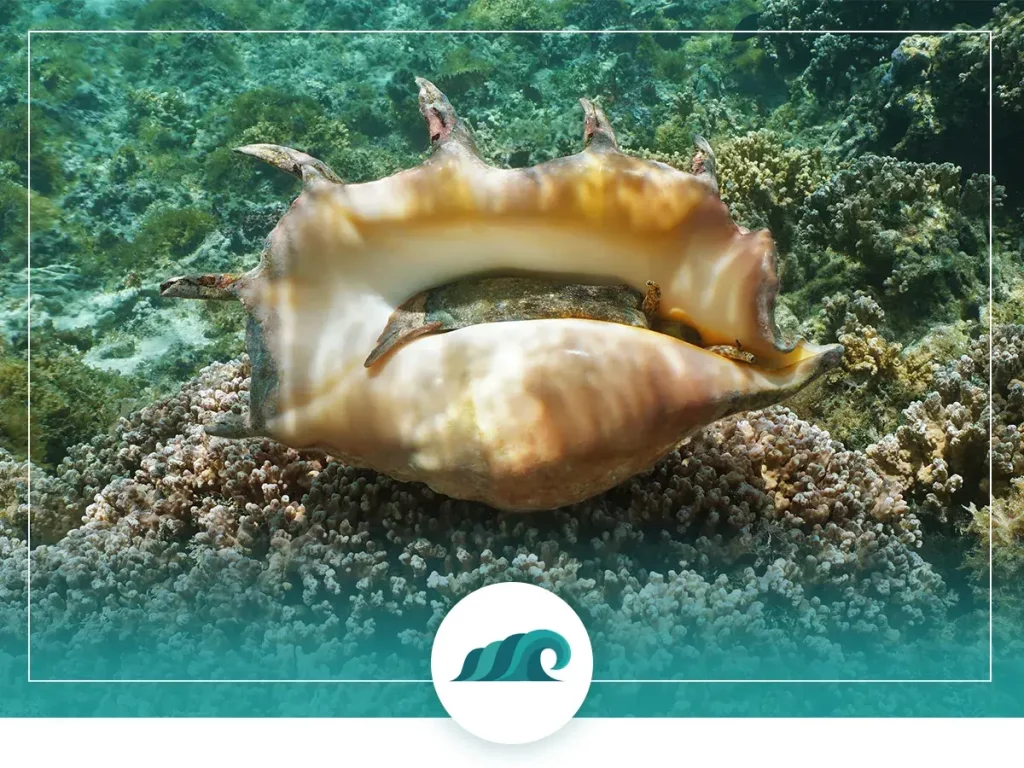
Conch are herbivores that mostly eat sea grass, algae, and other vegetation. As juveniles, they mostly eat algae and plankton, but as they mature they develop a long snout that allows them to target more varied vegetation.
While they may look somewhat sedentary, they actually wander for miles in search of food and mating opportunities. They reproduce year-round, with females laying hundreds of thousands of eggs that drift in the current for days until they sink to the sea floor and bury under the sand until they hatch.
Juveniles stay hidden for about a year, until they’re about 2 inches long. They then emerge and begin feeding on plankton and other plant matter. The conch’s shell expands as it grows, until it reaches about 4 years old – where it reaches its mature size. Its shell will continue to grow in thickness as it ages, and adult conch can reach 30 years of age.
Habitat and Range
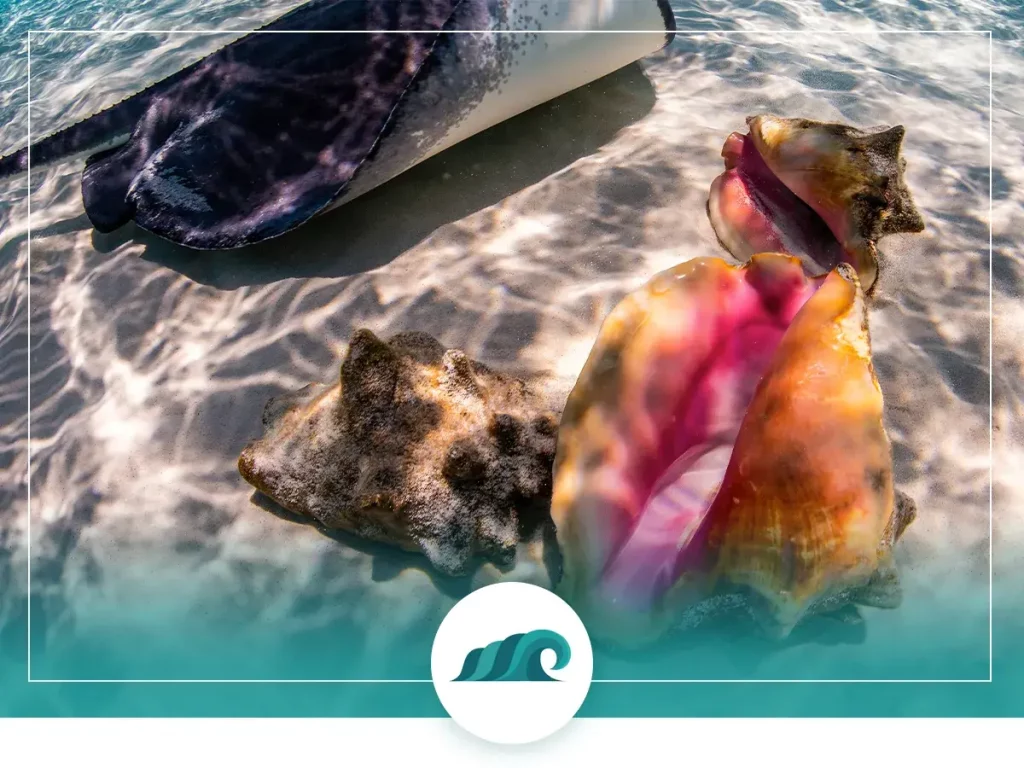
Conch live in tropical waters all over the globe, and are particularly numerous throughout the Caribbean. The most well-known species – the queen conch – were once numerous throughout the Caribbean, but were overexploited in certain areas, including the Florida Keys. It’s now illegal to harvest queen conch in any Florida waters.
Their natural range extends from Bermuda to the Florida coast, down throughout the Gulf of Mexico, and as far south as the Northeast regions of Brazil. They’re mostly found in semi-shallow water between 1 and 100 feet deep. As they consume seagrass and algae, their range is limited to the availability of edible plant life. Juveniles inhabit shallower inshore seagrass meadows, while adults are typically found in deeper water.
Most of the conch harvested and sold on the international market is imported into the United States today. Conch are still numerous in several parts of the Caribbean, including the Bahamas, Jamaica, and Turks and Caicos.
Conch as Food
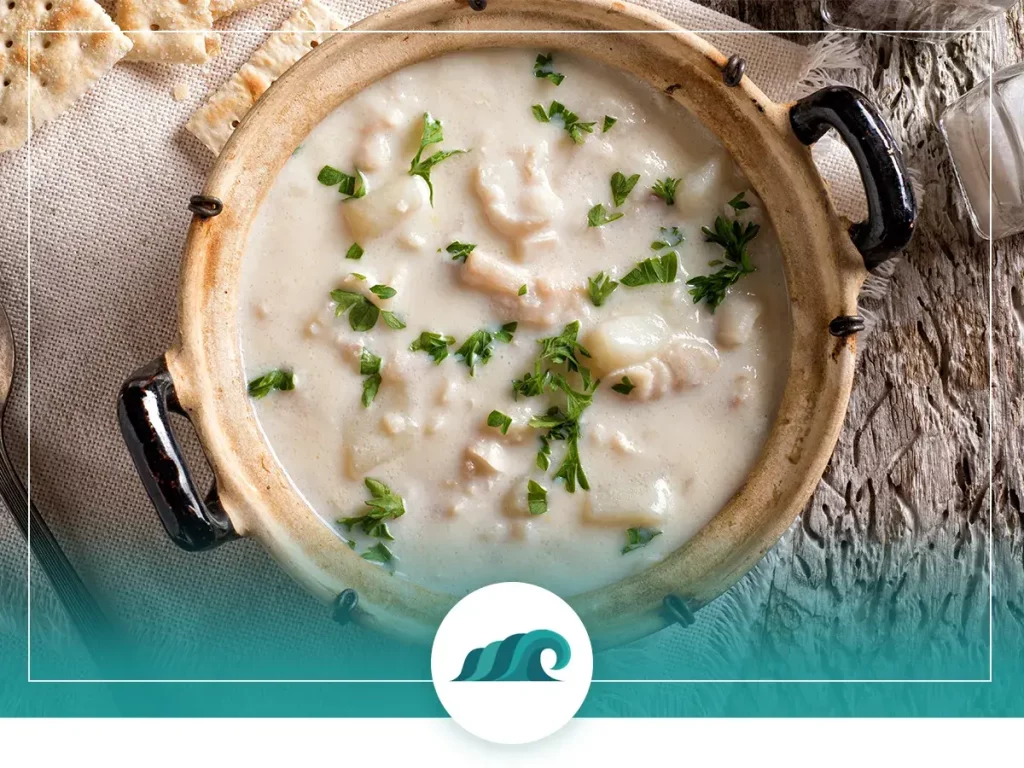
Conch have a rich and storied history as a key part of Caribbean, Mediterranean, and South east Asian food culture. Their meat is highly prized and is used in a wide variety of dishes – from stews to chowder to salads and fritters. It’s also popular served raw in citrus juice – ceviche style. Their meat is also occasionally used as fishing bait, but most of the harvest goes towards human consumption.
Conch meat is fairly neutral and it has the tendency to take on whatever flavors are used in its preparation. It’s soft, slightly rubbery, and has a salty crab-like flavor that’s unlike any other seafood. It’s neutrality makes it highly versatile, and great for a wide variety of preparations.
As they move slowly and mostly reside in shallow water, their fairly easy to harvest. They can be harvested by hand or with hooked long poles, and some regions also permit harvesting with scuba equipment.
Due to their popularity as food, the Queen conch harvest has led to a depletion of stocks in some portions of the Caribbean.
Conservation

Conch (Queen conch in particular) are vulnerable to overfishing due to their slow maturity rate, ease of harvesting, and lax regulations in certain regions. As mentioned previously, conch have been overexploited in certain parts of the Caribbean, although they’re not endangered on the whole.
Another issue that contributes to overfishing is that large juveniles have nearly the same amount of meat as mature adults. Unlike adults, large juveniles haven’t had yet had the chance to reproduce, so harvesting them at this point contributes to a falling population.
Conch are listed categorized under Appendix II by the CITES (convention on international trade in endangered species). This means they’re not threatened with extinction but could become so in the future if trade is unrestricted.
Nowhere is this more of a pressing issue than in the Bahamas. Conch are found nearly everywhere throughout the island chain, but overharvesting has become an issue in recent years. Efforts to sustain a healthy population include limiting the harvest to adults, and new proposals include ending exports and implementing a strict size limit.
Preparation
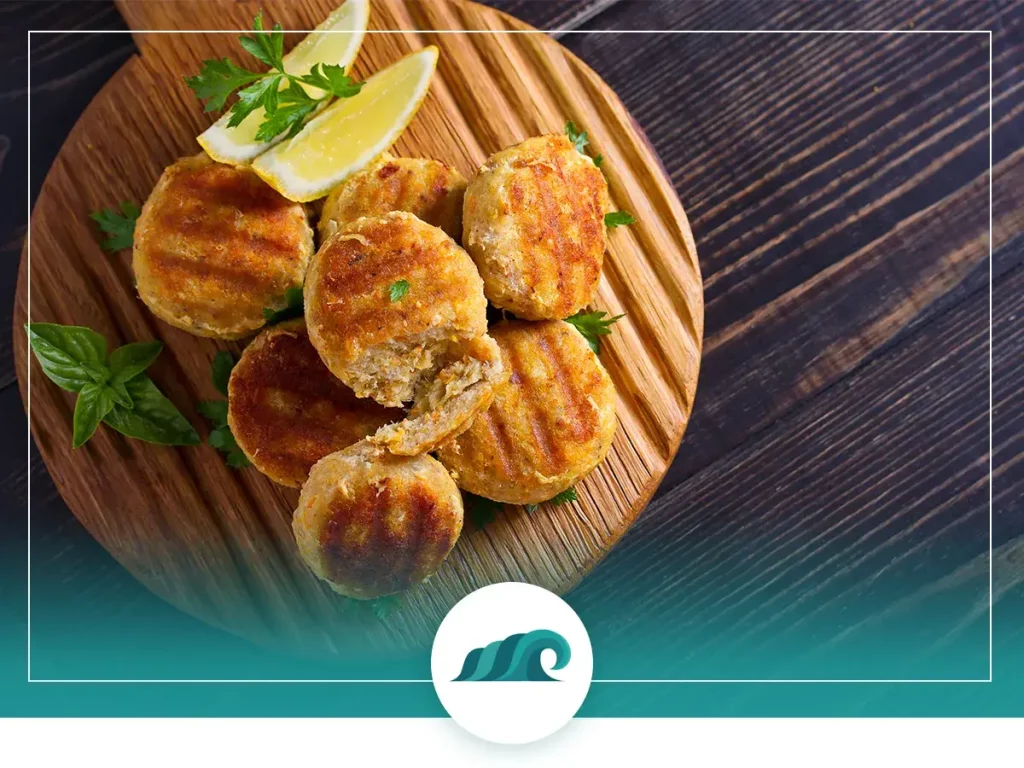
While there are many ways to prepare this charming food, perhaps the most beloved and iconic are those delicious deep-fried balls knows as conch fritters.
Conch Fritters Recipe
Ingredients:
- 1-pound fresh conch meat, minced
- 2 eggs
- Salt and fresh cracked pepper
- 2 cloves garlic, chopped
- ½ onion, minced
- 1 stalk celery
- ½ red or green bell pepper, minced
- 1 jalepeno or ½ a scotch bonnet pepper, minced
- ¾ cup all-purpose flour
- ½ cup milk or beer
- 1-quart frying oil (peanut oil works well)
Directions:
- Heat the oil in a large pot or deep fryer until it reaches 350° F.
- While the oil heats up, combine flour, egg, milk/beer with the meat, peppers, onion, garlic, and salt and pepper. Mix well.
- Gently drop the batter into the hot oil in small rounded tablespoon portions.
- Fry until golden brown on the outside. About 4-5 mins per fritter.
- Remove from oil with a slotted spoon and place on plate lined with paper towels.
- Serve with your favorite dipping sauce and enjoy!

